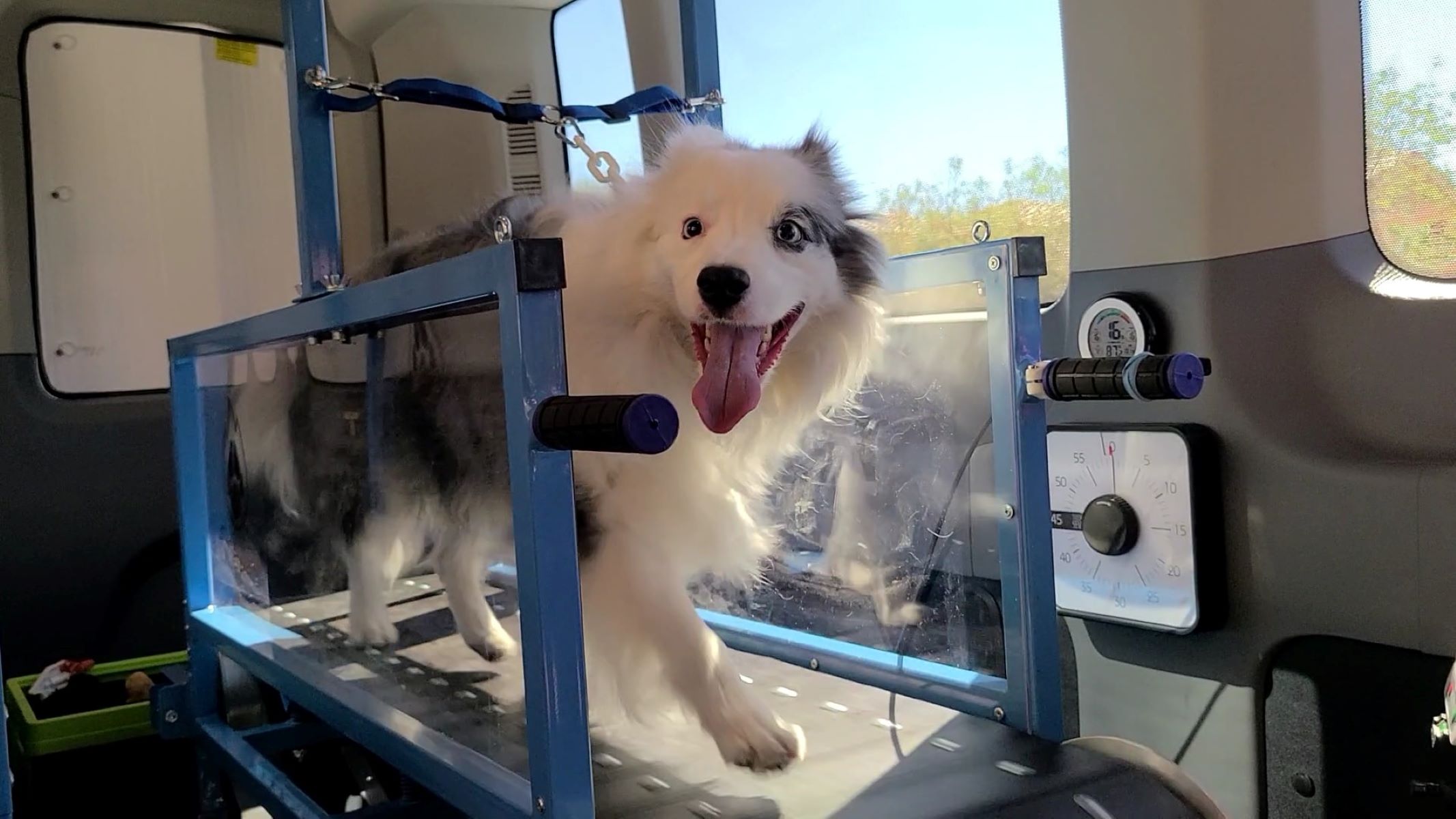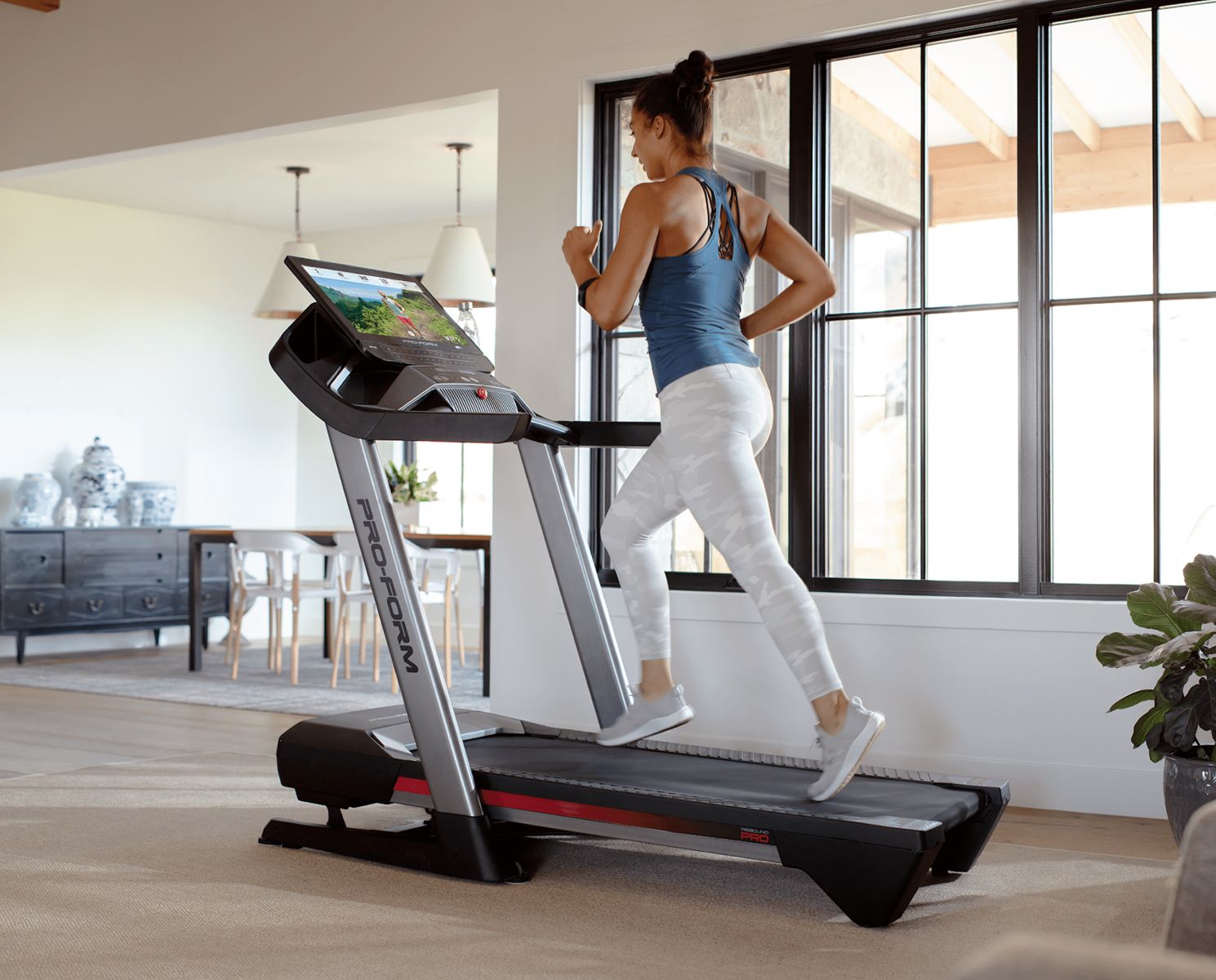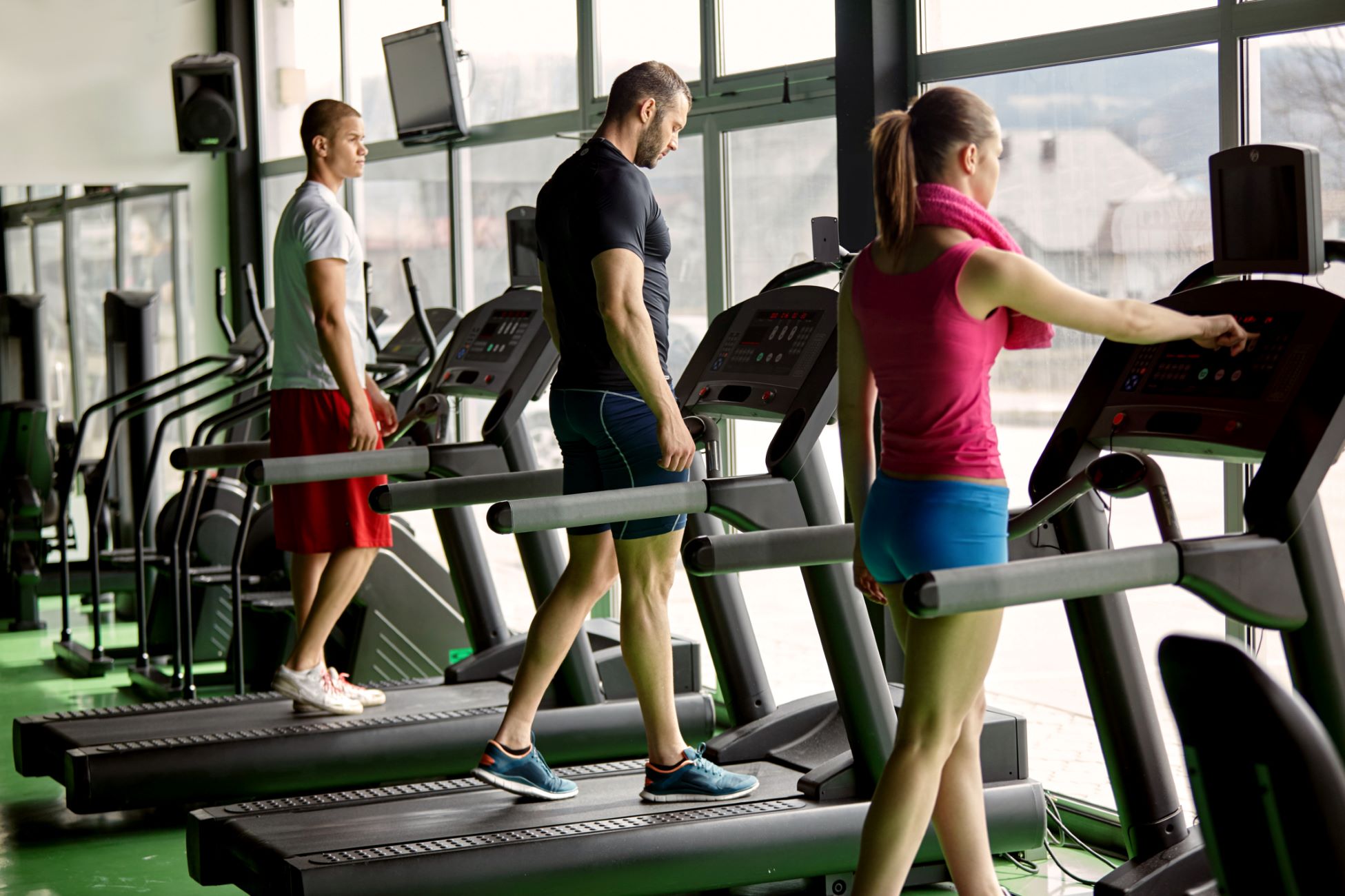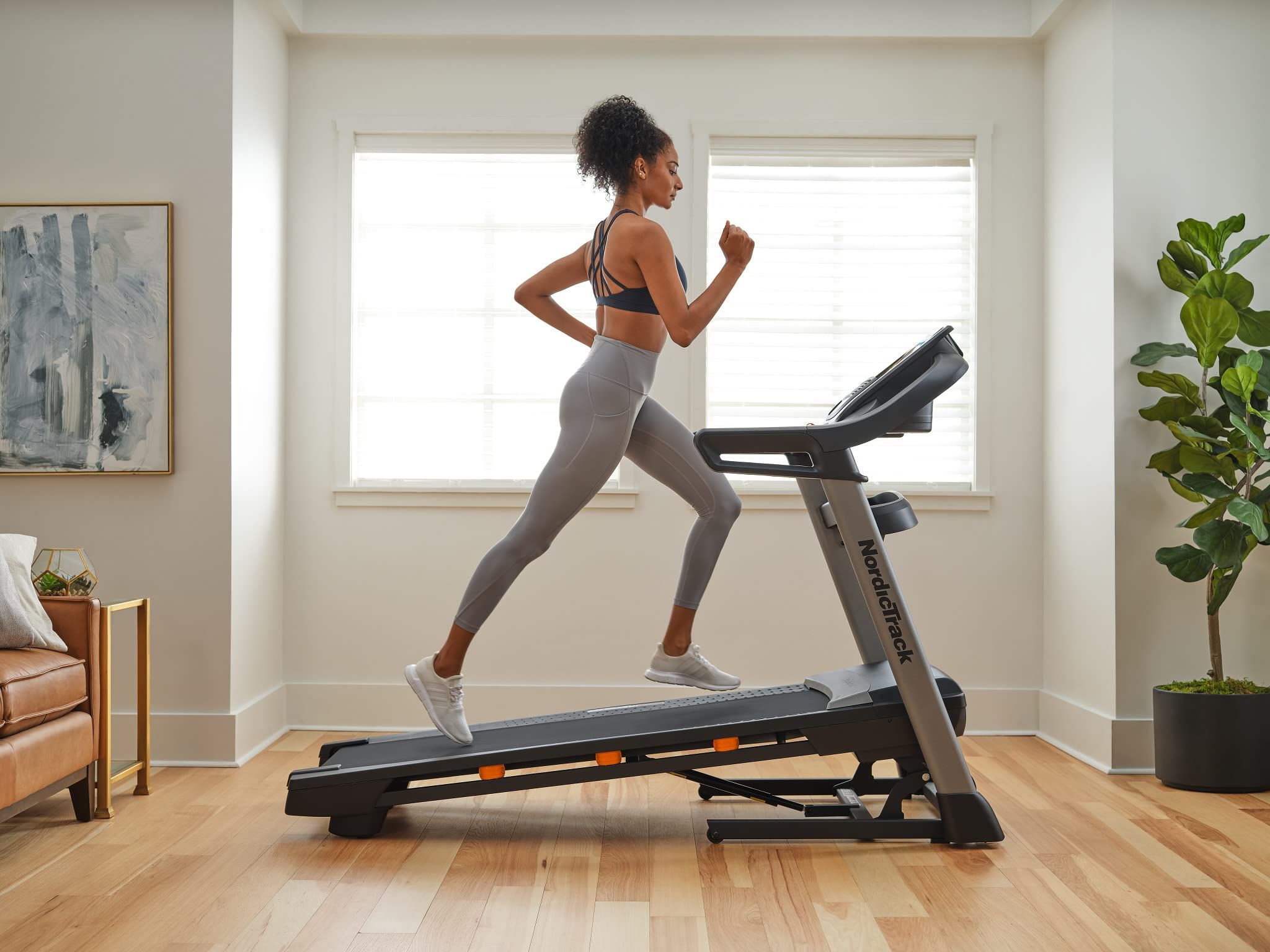Home>Misc>Featured>Why Does My Treadmill Slow Down When I Step On It


Featured
Why Does My Treadmill Slow Down When I Step On It
Modified: August 18, 2023
Discover why your treadmill slows down when you step on it. Get featured solutions to fix this common issue and enjoy uninterrupted workouts.
Introduction
Welcome to the world of fitness and exercise! If you’re an avid runner or simply someone who enjoys walking or jogging, owning a treadmill can be a convenient and effective way to stay active regardless of the weather or time constraints. However, you may have noticed that sometimes your treadmill slows down when you step on it, and you’re left wondering why.
In this article, we will explore the mechanics behind treadmill performance and delve into the factors that can cause your treadmill to slow down when you put weight on it. Understanding these factors will not only help you troubleshoot any issues you may encounter, but also assist in optimizing your workouts for a smoother and more consistent performance.
Every treadmill is built with various components that work together to provide you with a reliable and efficient exercise experience. From the motor that delivers power to the belt system that supports your movement, these components need to work in harmony to maintain a steady speed and accommodate the added load when you step on the treadmill.
Throughout this article, we will explore key components such as the belt tension, motor capacity, and proper calibration, as well as common troubleshooting techniques to address any issues you may encounter with your treadmill. Whether you’re an experienced user or new to the world of treadmills, this article will provide valuable insights into the interplay between your body weight and the mechanical aspects of your treadmill.
Understanding the mechanics of a treadmill
Before we delve into why your treadmill slows down when you step on it, it’s important to have a basic understanding of how a treadmill works. At the heart of every treadmill is the motor, which provides the power needed to move the belt and allow you to walk, jog, or run.
The motor of a treadmill is rated in horsepower (HP), typically ranging from 1.5 to 4 HP. The higher the horsepower, the more powerful and capable the motor is in maintaining a consistent speed, even with varying weights and speeds. A more powerful motor is often preferred for heavier users or intense workouts.
The motor is connected to a series of pulleys and drive belts, which drive the movement of the treadmill’s belt system. The belt system consists of a running deck, which supports your weight and provides the surface for you to walk or run on, and a conveyor belt that moves as the motor drives it.
When you step on the treadmill, your weight is transferred onto the running deck. This added weight causes the running deck to flex slightly, resulting in a reduction of tension in the belt system. The reduction in tension can lead to a decrease in the speed of the treadmill, as the motor has to work harder to compensate for the added load.
Another crucial component of a treadmill is the control panel. The control panel allows you to adjust the speed and incline of the treadmill to suit your preferred workout intensity. It is important to note that the control panel sets the desired speed, but it is ultimately the motor that determines whether the treadmill can maintain that speed.
Now that we have a basic understanding of the mechanics of a treadmill, let’s explore how factors such as body weight, belt tension, motor capacity, and calibration can affect the performance of your treadmill and potentially lead to a slowdown when you step on it.
The impact of body weight on treadmill speed
When it comes to the performance of a treadmill, body weight plays a significant role. The more weight applied to the running deck, the higher the chances of a slowdown in treadmill speed.
As mentioned earlier, when you step on the treadmill, your body weight is transferred to the running deck. This added weight causes the running deck to flex slightly, which in turn reduces the tension in the belt system. The reduction in tension requires the motor to work harder to maintain the desired speed.
If you are on the heavier side, the impact on treadmill speed is more prominent. A heavier body weight increases the downward force applied to the running deck, resulting in greater belt tension reduction and requiring the motor to exert more power to maintain the same speed.
It’s important to consider the recommended weight limit specified by the manufacturer of your treadmill. Exceeding the weight limit can put excessive strain on the motor and belt system, leading to performance issues or even potential damage to the treadmill.
To optimize the performance of your treadmill, try to maintain a weight within the recommended limit and ensure even weight distribution on the running deck. This will help minimize the impact on treadmill speed and reduce the strain on the motor.
It’s worth noting that a decrease in treadmill speed due to body weight is more noticeable at slower speeds and when there’s a significant difference between your weight and the weight of the user set as the default weight on the treadmill. If the default weight is significantly lower or higher than your actual weight, it may be necessary to adjust the settings accordingly to ensure accurate speed control.
Now that we understand how body weight affects treadmill speed, let’s explore the role of belt tension and how it can impact the performance of your treadmill.
Belt tension and its effects on treadmill performance
Proper belt tension is crucial for the smooth operation and performance of a treadmill. The tension refers to the tightness of the belt system, which includes the running belt and the drive belt that connects to the motor. When the belt tension is not properly adjusted, it can have a significant impact on the performance of your treadmill.
If the belt tension is too loose, it can result in slipping or jerky movements, and ultimately lead to a decrease in treadmill speed. A loose belt reduces the grip between the running belt and the motor-driven belt, causing the running belt to slip and lose traction. As a result, the motor has to work harder to maintain the desired speed, leading to a slowdown.
On the other hand, if the belt tension is too tight, it can cause excessive friction between the belts, which can strain the motor and increase the risk of belt damage. An overly tight belt may also lead to a decrease in treadmill speed as the motor struggles to overcome the resistance caused by the excessive tension.
To ensure optimal performance, it is recommended to check the belt tension periodically and make necessary adjustments. The exact method of adjusting the belt tension may vary depending on the model of your treadmill, so it’s important to consult the user manual or contact the manufacturer for specific instructions.
Regular maintenance of the belt system is essential to prevent issues related to belt tension. This includes cleaning and lubricating the running belt and regularly inspecting for any signs of wear or damage. A well-maintained and properly tensioned belt system will not only help maintain a consistent treadmill speed but also prolong the lifespan of your treadmill.
Now that we’ve explored the impact of body weight and belt tension on treadmill performance, let’s move on to discussing the role of motor capacity in controlling treadmill speed.
Motor capacity and its role in treadmill speed control
The motor is the powerhouse of your treadmill and plays a vital role in controlling the speed and performance of the machine. The motor capacity, measured in horsepower (HP), determines the strength and capability of the motor to maintain consistent speed, even under varying loads.
A higher horsepower motor typically indicates a more powerful motor, capable of delivering the necessary power to overcome the added weight and maintain speed without significant slowdowns. This is particularly important if you are a heavier user or engage in high-intensity workouts that put additional stress on the treadmill.
When choosing a treadmill, consider your body weight and the type of workouts you plan to do. A higher horsepower motor is recommended for heavier individuals or those who engage in intense running or jogging exercises. Conversely, if you are a lighter user or prefer low-impact walking, a lower horsepower motor may suffice.
It’s important to note that motor capacity alone is not the sole determinant of treadmill performance. Other factors, such as belt tension, maintenance, and calibration, also come into play. A well-maintained treadmill with proper belt tension and calibration can still perform optimally, even with a lower horsepower motor.
When experiencing a slowdown in treadmill speed, it’s worth considering if the motor capacity is sufficient for your body weight and workout intensity. If you notice consistent issues with speed control, it might be necessary to consult with the manufacturer or a professional technician to assess the motor and make any necessary adjustments or upgrades.
Proper care and maintenance of the motor are also essential to ensure long-term performance. Regularly cleaning the motor area, inspecting for any signs of wear or damage, and following the manufacturer’s recommendations for maintenance will help prolong the life of your treadmill and optimize its speed control.
Now that we’ve explored the role of motor capacity, let’s move on to discussing the importance of calibration and maintenance in maintaining proper treadmill speed.
Calibration and maintenance of treadmills
Calibration and maintenance are critical for ensuring the accurate and consistent performance of your treadmill. Over time, factors such as regular use, belt tension adjustments, and even environmental conditions can affect the calibration of the treadmill, potentially leading to a slowdown in speed.
Calibration refers to the process of adjusting and aligning the internal components of the treadmill to ensure that the speed readings and controls accurately reflect the actual speed of the belt. Proper calibration is crucial for maintaining the accuracy of the speed settings and facilitating a smooth and consistent workout experience.
It is recommended to consult the user manual or reach out to the manufacturer for specific instructions on how to calibrate your treadmill. This may involve inputting your weight, performing a speed test, or making manual adjustments to the controls. By following the calibration process, you can ensure that the displayed speed corresponds with the actual speed of the treadmill.
In addition to calibration, regular maintenance is essential to keep your treadmill in optimal condition. This includes tasks such as cleaning the belt and deck, lubricating the belt, inspecting for any signs of wear or damage, and tightening any loose bolts or screws. Neglecting maintenance tasks can lead to belt slippage, mechanical issues, and ultimately a decrease in treadmill speed.
Regularly inspecting and maintaining the belt tension is also important for maintaining proper treadmill speed. If the tension becomes too loose or too tight, it can affect the performance of the treadmill and lead to a slowdown. Check the manufacturer’s guidelines for recommended belt tension adjustments and follow them accordingly.
Proper maintenance also extends to the motor and electrical components of the treadmill. Keep the motor area clean and free from dust or debris, as they can hinder motor performance. If you notice any unusual noises, vibrations, or malfunctions, it is advisable to consult with a professional technician to diagnose and resolve any underlying issues.
By regularly calibrating and maintaining your treadmill, you can ensure that it operates smoothly and efficiently, minimizing the chances of a slowdown in speed when you step on it. Remember to follow the manufacturer’s recommendations for maintenance intervals and procedures, and address any issues promptly to maintain the longevity of your treadmill.
Troubleshooting common issues causing treadmill slowdown
Experiencing a slowdown in treadmill speed can be frustrating, but there are several common issues that you can troubleshoot to identify and resolve the problem. By addressing these issues, you can restore your treadmill to its optimal performance. Here are some common troubleshooting steps:
- Check the power source: Ensure that your treadmill is properly plugged into a working power outlet. Sometimes, a loose or faulty connection can result in reduced power to the motor, leading to a slowdown.
- Inspect the power cord: Examine the power cord for any signs of damage, such as cuts or fraying. A damaged power cord can affect the flow of electricity to the treadmill, resulting in decreased speed.
- Verify the safety key: Most treadmills are equipped with a safety key that needs to be inserted to activate the machine. Ensure that the safety key is properly inserted and engaged, as an improperly inserted key can cause the treadmill to slow down or stop.
- Check the belt tension: Verify that the belt tension is properly adjusted. A loose or overly tight belt can interfere with the belt’s movement, affecting the speed and causing a slowdown. Consult your treadmill’s user manual for instructions on how to adjust the belt tension.
- Clean and lubricate the belt: Accumulated dirt, debris, or lack of lubrication can cause increased friction and hinder the movement of the treadmill’s belt. Clean the belt and apply lubricant according to the manufacturer’s recommendations to ensure smooth operation and prevent slowdowns.
- Inspect the motor: Check the motor area for any signs of obstruction or malfunction. Ensure that the motor is clean and free from dust or debris that could hinder its performance. If you notice any unusual noises or vibrations coming from the motor, it is advisable to consult a professional technician.
- Calibrate the treadmill: Use the calibration process described in the user manual to ensure that the speed readings and controls accurately reflect the actual speed of the treadmill. Calibration helps maintain the accuracy of speed settings and can prevent unnecessary slowdowns.
By troubleshooting these common issues, you can pinpoint the cause of the slowdown and take appropriate action to resolve it. If the problem persists or you are unsure about performing the troubleshooting steps, it is recommended to reach out to the manufacturer or contact a professional technician for further assistance.
Conclusion
Understanding the factors that can cause a treadmill to slow down when you step on it is key to maintaining optimal performance and a consistent workout experience. The impact of body weight, belt tension, motor capacity, and the importance of calibration and maintenance all play a role in the speed control of your treadmill.
Body weight can affect the treadmill’s speed due to the added load and reduced belt tension. Keeping within the recommended weight limit and ensuring even weight distribution can minimize the impact on speed control.
Belt tension is crucial for maintaining a smooth and consistent performance. Adjusting the tension as needed and regularly maintaining the belt system will help prevent slipping or jerky movements that can lead to a decrease in speed.
The motor capacity determines the treadmill’s ability to maintain speed under varying loads. Choosing a motor with the appropriate horsepower for your body weight and workout intensity is essential for consistent speed control.
Calibration ensures that the speed readings and controls accurately reflect the actual speed of the treadmill. Regularly calibrating your treadmill, along with proper maintenance, will help maintain accurate speed control and prolong its lifespan.
When faced with a slowdown in treadmill speed, troubleshooting common issues such as checking the power source, inspecting the belt tension, and cleaning and lubricating the belt can often resolve the problem. If necessary, consult the manufacturer or a professional technician for further assistance.
By understanding these factors and following proper maintenance and troubleshooting steps, you can ensure that your treadmill operates at its best and provides a consistent and enjoyable workout experience for years to come.









